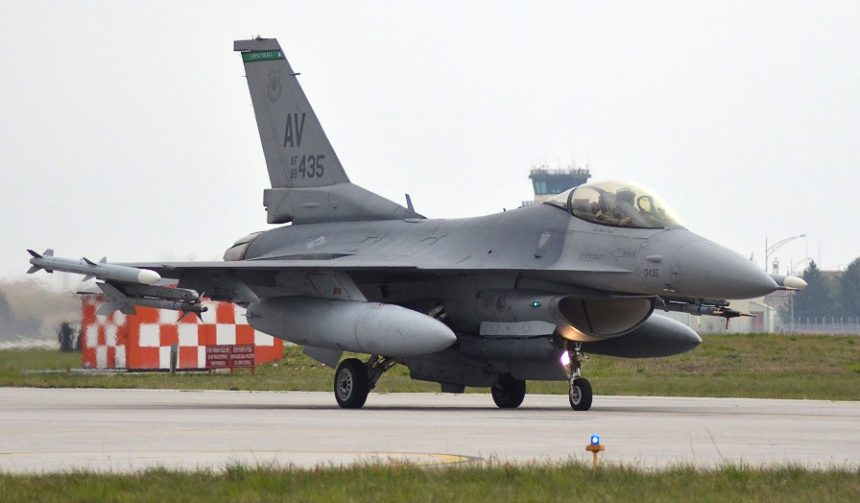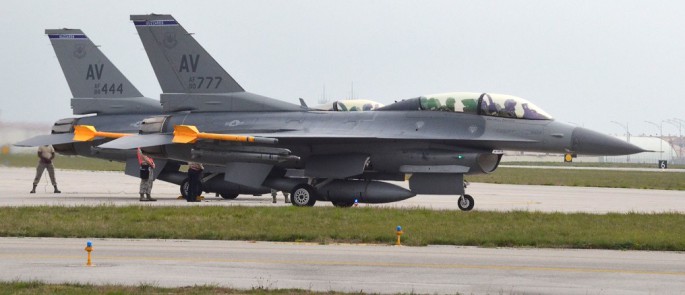Based at Aviano airbase, in northeast Italy, the 31st Fighter Wing mobilized its squadrons deploying their F-16s to Poland in response to Ukrainian Crisis.
“The noise you hear is the sound of freedom”.
This catchphrase was coined at Beaufort Marine Corps Air Station and can be read at several airbases around the world, however, this is the first thing that comes to mind by looking at the U.S. F-16s at Aviano, that we had the opportunity to visit lately.
Even if the 31st Fighter Wing has deployed 12 F-16s from the 555th Fighter Squadron to Poland for a combined exercise with the Polish Air Force in response to Ukranian Crisis, and six more Vipers from the 510th FS “Buzzards” to Romania, plenty Fighting Falcons continue to perform training sorties from the base in the northeastern Italy.
With its forty Block 40 F-16CMs/DMs (formerly CGs/DGs), the 31st Fighter Wing is part of the United States Air Force in Europe (USAFE).
As explained to The Aviationist by U.S. personnel, the Vipers belonging to to both squadrons are capable of flying both offensive and defensive air combat missions, performing mainly air superiority, attack and CAS (Close Air Support) missions; no SEAD (Suppression of Enemy Air Defenses) role, since this specific task is assigned to the 52nd Fighter Wing Vipers, based at Spangdalhem, in Germany.
Quite impressive is also the wide array of weapons used to carry out their missions.
Air-to-air weaponry includes AIM-120B/C AMRAAM and the AIM-9L/M/X, with the latter model of the Sidewinder even more lethal because combined with the Joint Helmet Mounted Cueing System. For the air to ground role every kind of free fall bombs is available: from the various general purpose bombs belonging to the US Mark 80 series, to the modern smart bombs such as the GBU-10/24/31 and JDAM (Joint Direct Attack Munition) models.
The visit was also the opportunity to talk with some experienced crew of the 31st FW about the way the F-16 compares with other USAF hardware: the F-15E Strike Eagle, more powerful and more easy to maintain than the Fighting Falcon, but less maneuverable and with a higher radar-cross section; the F-22 Raptor, an impressive fighter that still requires time to achieve its full potential; and the F-35 Lightning II, an interesting, very expensive weapons system with many unresolved problems and an uncertain future.
Still, 31st FW pilots are more than happy with their old F-16s: “The Common Configuration Implementaion Program (CCIP), brought essential avionics upgrades to our F-16s keeping them to a state of the art standard” they said “and with our Vipers we are ready to deploy anywhere our presence is requested to protect US and NATO interests.”
As the deployments to Poland and Romania prove.
Image credit: Dario Leone


















